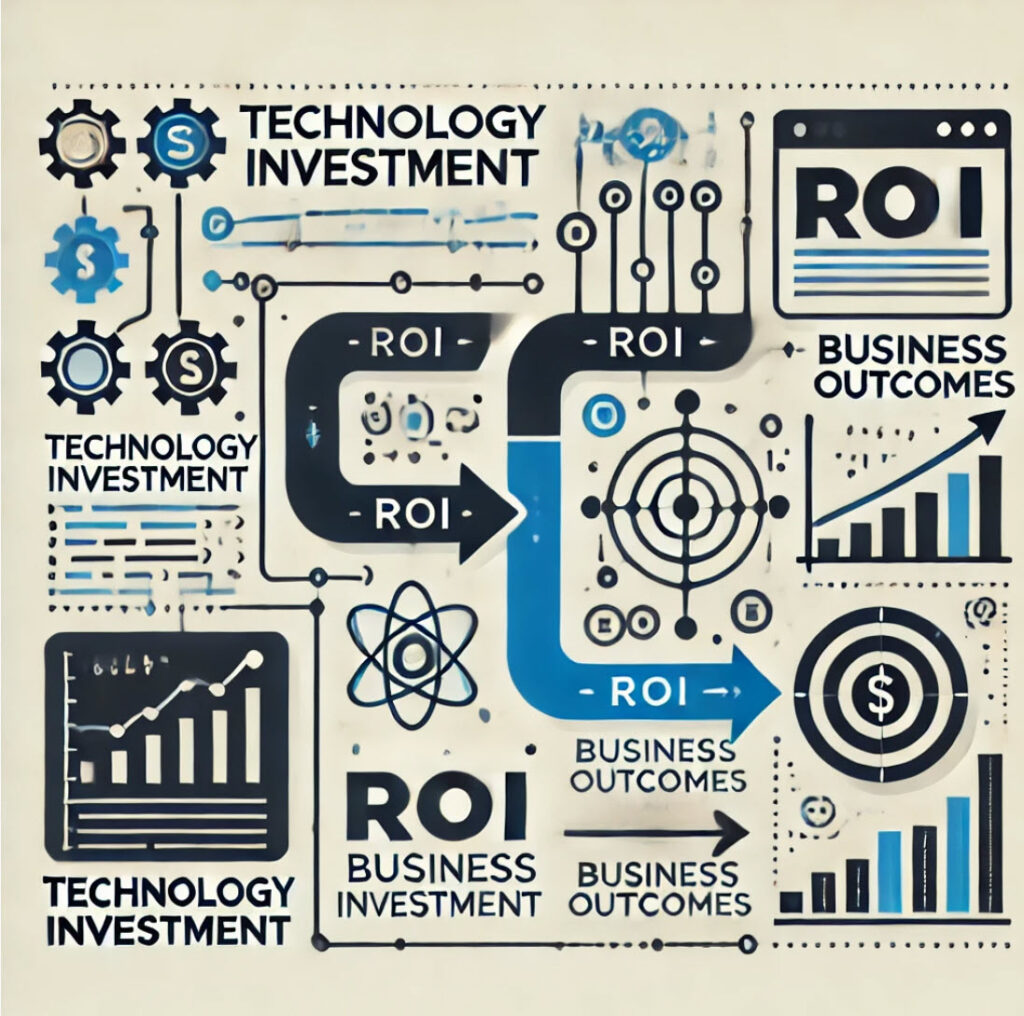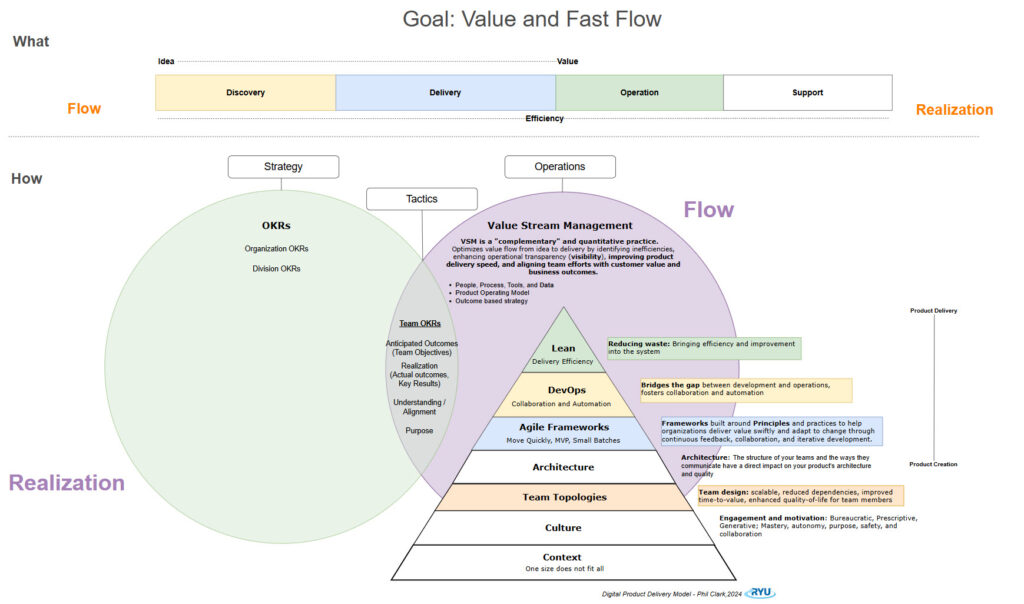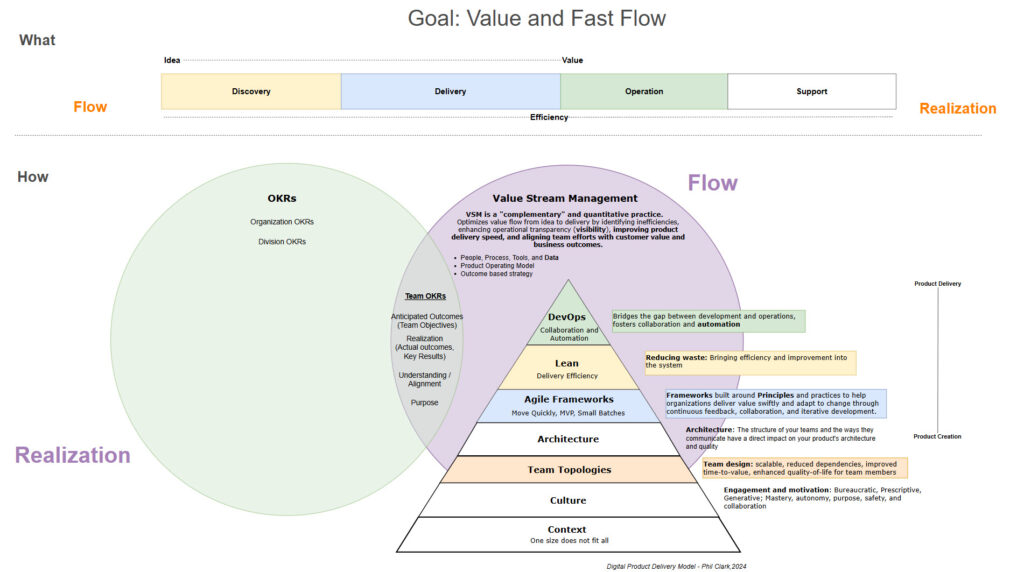7 min read

Audience and Purpose
This post is both a reflection and a vision. It’s a message for my team—who have been with me through challenges and successes—and a blog for leaders, peers, and anyone interested in the lessons we’ve learned and where we’re going next.
I chose to share this message as a blog post to reach my team and other leaders or organizations facing similar challenges. These insights encourage collaboration, spark new ideas, and help others navigate organizational transformation.
From Good to Great: Shifting to Outcomes in 2025
Today is January 1, 2025—a fresh start and a chance to reflect on the past year and plan for what’s ahead. During Thanksgiving, I shared my gratitude with my division and team for their hard work and achievements during a challenging time. However, I haven’t yet fully shared my vision for the future. As this new year begins, I’m reflecting on the significant changes ahead and our unique opportunities.
Our parent organization, which acquired us last year, is undergoing its transformative journey, driven by new investors and ambitious strategic plans. As they prepare to begin January with an inspiring company-wide message, it is equally important to focus on our division and the brand we have built together. This message is directed to our team as we navigate this period of change and improve the foundation for the future.
As we continue to grow and integrate, it is essential to maintain a long-term perspective. By 2026, we aim to become a stronger, unified organization with aligned practices, cohesive team structures, and a clear strategic direction. This year represents a pivotal phase in that process—a time to refine our identity, enhance our impact, and position ourselves for sustained success.
The perspectives and recommendations outlined here are based on my personal reflections and my understanding of where we currently stand and the potential paths forward. While I believe these steps represent meaningful progress, I want to stress that they are not the only way forward. If you have alternative ideas or cannot align with this vision, I encourage you to share your input. Collectively, our contributions will help shape the most effective path ahead.
A Journey of Growth and Transformation
Over the past decade, our team has faced its share of challenges—personality conflicts, shifting priorities, and growing pains—but we’ve also achieved remarkable transformations. Together, we’ve evolved from an unstable monolithic platform to a modern, scalable system powered by a culture of investment, innovation, and learning.
Ten years ago, we were constantly rebooting systems hosting a fragile monolithic solution. Back then, our releases were massive undertakings—twice a year, requiring months of preparation and leaving us with long downtimes and high risk. Today, we operate a cloud-based, microservices architecture, built on the principles of Agile, Lean, and DevOps. Our team has embraced automation, continuous delivery, and scalable design, enabling us to release updates 5 to 20 times a day with confidence and speed.
Additionally, 2024 marked yet another year of 99.99% system and platform uptime, a testament to the incredible work of our production engineering and platform teams. They’ve created a robust system that not only serves our customers seamlessly but also provides developers with a reliable, scalable foundation for innovation.
This transformation was about more than just technical changes. It required us to redefine our culture, leadership style, and design principles while investing in our people and processes. Along the way, I’ve realized that my passion as a leader hasn’t always been perfect—whether through my soapbox moments or the well-known “Phil Fridays,” where I’ve shared thoughts and emotions built up over the week (not to be confused with “50 Fridays,” which focuses on innovation). These moments, while not always polished, came from a genuine desire to see us succeed and continuously improve.
While we’ve said goodbye to a few team members who helped us kickstart this transformation, their contributions were vital in laying the groundwork for our progress. The baton has been passed, and the team has carried it forward, driving meaningful change and continuing to make strides. What inspires me most is that many of the people who helped lead this journey are still here, pushing us to new heights. Our success is not just about technological evolution—it’s also a testament to the strength of our culture and the dedication of our team.
The Challenges of Commitment: Moving to a Product Operating Model
Over the past few years, we’ve attempted to transition to a product operating model and embrace practices like value stream management. While the technology team introduced these concepts and championed them, my perception is that we’ve struggled to fully commit because product and technology have not been fully aligned.
Without full commitment from the product side, we’ve continued to treat teams like projects, prioritizing capacity demands across all products rather than focusing on the holistic value streams that underpin the product operating model. This fragmented approach has created inefficiencies and diluted the impact of our efforts.
In 2025, this must change. Both product and technology must align and fully commit to the product operating model. We need to reintroduce the reasons we’re practicing value stream management: to improve flow, align work to customer and business outcomes, and eliminate the inefficiencies of project-driven thinking. By embracing this approach together, we can build a stronger foundation for delivering value.
Again, this is my recommendation for moving forward. If you believe there’s a better way or cannot align with this vision, I encourage you to share your thoughts. Collaboration will help us shape the best possible future.
The Shift: Focusing on Outcomes
This year, our focus is on outcomes over outputs. It’s a simple but powerful shift: instead of measuring success by the features we deliver or the tasks we complete, we’ll measure it by the impact we create for our customers and the business.
This outcomes-first approach will give teams clarity and purpose, ensuring that every initiative has a measurable goal tied to a business or customer result. Importantly, this applies to both features and technical debt. Each type of work should have an anticipated outcome and clearly articulate the value it will bring to the customer and the results it will deliver for the organization. Here’s how we’re implementing this shift:
- Anticipated Outcomes: Every epic will start with a clearly defined, measurable outcome, documented in our tools like Jira.
- Example (Feature): Launch a new onboarding feature for learners.
- Outcome: 80% of new users complete onboarding within 7 days, leading to a 25% increase in first-month retention by Q3 2025.
- Example (Technical Debt): Refactor the search service to improve scalability.
- Outcome: Search success rate increases from 70% to 90%, resulting in a 15% boost in user engagement by June 2025.
- Alignment Through OKRs: Teams will translate these anticipated outcomes into team-level OKRs (Objectives and Key Results) that align with broader organizational goals.
- Example:
- Division Objective: Expand access to dual enrollment opportunities.
- Key Result: 10,000 learners use the new onboarding feature by August 2025.
- Team Objective: Improve onboarding for new learners.
- Key Result: 80% of new users complete onboarding within 7 days, increasing retention by 25%.
- Division Objective: Expand access to dual enrollment opportunities.
- Example:
- Closing the Loop: Measuring outcomes doesn’t end at delivery. Even if final metrics take a month, three months, or six months to materialize, we must go back and document the actual outcomes of our work. This step is critical for understanding whether our efforts moved the needle and for learning what adjustments might be needed in the future. Closing the loop ensures that we evolve based on data, not assumptions, and continuously improve how we deliver value.
By aligning outcomes with OKRs and closing the loop, we will create a system where every effort is purposeful, measurable, and connected to a larger vision. This approach will reduce chaos, improve clarity, and foster deeper engagement across teams, ensuring everyone understands not just what they are working on, but why it matters and how it contributes to our shared goals.
Balancing Progress with Organization Integration
While we focus on outcomes in 2025, we’re also navigating the complexities of post-acquisition integration. Aligning with our parent company and managing our brand presents its own challenges, but it also offers opportunities to grow and unify our practices.
In 2025, we’ll deepen our integration efforts while maintaining our commitment to improving how we work. This dual focus will prepare us for a seamless transition into a unified operating model in 2026 and beyond.
Key Takeaways for Leaders
Here are the key elements of our approach—ideas that I hope other leaders can use to improve alignment, engagement, and impact within their own teams:
- Start with Outcomes: Define measurable, customer-centric outcomes for every initiative before beginning work.
- Align with OKRs: Use team-level OKRs to connect outcomes with broader organizational goals.
- Empower Teams: Provide clarity and purpose to help teams prioritize work that drives real value.
- Close the Loop: Track and evaluate actual outcomes, learning from both successes and shortfalls.
- Commit to Product Thinking: Transition fully to a product operating model and align product and technology teams on shared goals.
Looking Ahead: Making 2025 Count
2025 is our opportunity to go from good to great. By shifting to outcomes, fully committing to the product operating model, and reintroducing value stream management, we’re not just improving how we measure success—we’re creating a stronger connection between our work, our customers, and our business goals.
To other leaders reading this: Software engineers and technical leaders who only focus on technical topics—like technical debt, infrastructure upgrades, code quality, and development processes—risk losing relevance. Why? Succeeding in today’s tech world requires more than technical skills. It requires understanding customer experiences, business goals, and the value of technical investments. Clear communication and alignment on shared goals are essential to achieving meaningful outcomes by connecting technical investments to business results.
The most successful engineering professionals and technical leaders will explain how technology investments can:
- Expand market opportunities through better performance and innovation
- Drive stronger customer impact
- Deliver measurable business results
- Create strategic advantages
Those who don’t adapt to this change are falling behind. In the future, knowing how to build technology won’t be enough. The key will be understanding why it’s being built—and making sure every decision, feature, or technical investment adds value for both the customer and the business.
This journey is about creating a lasting impact—for our customers, business, and teams. Linking technical investments to business outcomes is the adjustment that will improve our team in 2025, but it is just a choice. I welcome you—and my own team—to bring forward alternatives if you cannot align with this approach or have a better one in mind.
For more on this topic, check out my three-part series, “Profitable Engineering: Connecting Software Development to Business Outcomes.”
Poking Holes
I invite your perspective on my posts. What are your thoughts?







